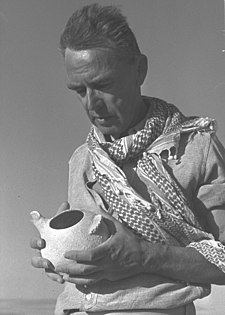http://www.hum.huji.ac.il/english/units.php?cat=5015&incat=4982
Besides the following the site has links to the journal
Textus, the Syro-Palestinian version of the Hebrew Bible, and the monograph series,
Kitāb al-Khilaf.
From the website:
The Hebrew University Bible Project (HUBP)
The
Hebrew University Bible Project – the flagship of research projects of
the Mandel Institute of Jewish Studies at the Hebrew University – was
established in 1956 to undertake a comprehensive survey of the history
of the textual development of the Hebrew Bible and to produce a major
critical edition. The project was initiated by the late Prof. Moshe H.
Goshen-Gottstein (Professor of Semitic Linguistics and Biblical
Philology), who together with the late Prof. Chaim Rabin (Professor of
Hebrew Language) and the late Prof. Shemaryahu Talmon (Professor of
Biblical Studies) constituted the original board of editors.
The
staff of the Bible Project is comprised of recognized experts in the
fields of textual criticism, Hebrew language, Masoretic studies and
Biblical philology.
The
study of the Hebrew Bible is the cornerstone of Jewish Studies,
including historical, linguistic, cultural and spiritual aspects. As
such, the text of this all-important body of ancient literature demands
the most meticulous treatment in regard to its authenticity and history
of transmission.
Many
classical works of literature have been published in outstanding
editions, crowning a painstaking process of collating manuscripts and
examining their history, correcting corruptions or interpolations, so as
to present the reader with the most authoritative and accurate version
of the text possible. Yet to this day, there is no comprehensive
critical edition of the Hebrew Bible providing the entire range of
textual evidence collated from all extant sources.
The Aleppo Codex
The
Aleppo Codex, saved from the flames when hostilities broke out against
the synagogue of Aleppo in Syria, which was attacked after the
declaration of the State of Israel in 1948, is the oldest and most
authoritative complete manuscript of the Masoretic text of the Hebrew
Bible, sanctioned by the great Jewish scholar Maimonides. Brought to Israel from Syria to the late President Izhak Ben-Zvi, it serves as the basis for the text of the Bible Project edition.
The Entire Picture
The
Hebrew Bible text has been handed down in manuscript form with the
greatest of care by many generations of copyists. However, the further
back one traces its transmission in history, the more variants are found
in the witnesses to the text. This 'pluriformity' is exhibited most
dramatically in the fragments of biblical scrolls dating from the late
centuries BCE and the early Common Era, found in the Judean Desert
(Qumran, Masada, etc.). The Bible Project edition includes all the
evidence bearing on the text, listing every difference in the ancient
translations: the Greek Septuagint, the Latin Vulgate, the Aramaic
Targums and the Syriac Peshitta. It also lists the variant readings
attested in the Dead Sea scrolls, quotations of biblical verses in
Rabbinic literature, and in medieval Hebrew manuscripts and
commentaries.
The text of the Aleppo Codex, together with its masora,
the meticulous recording of variant readings from all important
witnesses, and accompanying philological notes clarifying readings
listed in the apparatuses, make up the most comprehensive critical
edition of the Hebrew Bible, reflecting the fruit of years of research.
A Training Ground for Scholars
The
research involved in collating the variant readings for each apparatus
is carried out by four separate teams, each headed by an expert in the
field. The Bible Project also functions as a training ground for
promising young scholars engaged as research assistants for the various
apparatuses, under the supervision of senior scholars, who gain
invaluable practical experience in the field of biblical research and
textual criticism. Many of these go on to become senior teachers and
occupy senior academic positions at institutions of higher education
both in Israel and abroad.


 Born
in Cincinnatti, Ohio in 1900, Nelson Glueck was one of the foremost
leaders in the field of biblical archaeology and Reform Judaism. He
read the benediction at the swearing-in ceremony of President John F.
Kennedy.
Born
in Cincinnatti, Ohio in 1900, Nelson Glueck was one of the foremost
leaders in the field of biblical archaeology and Reform Judaism. He
read the benediction at the swearing-in ceremony of President John F.
Kennedy. 
